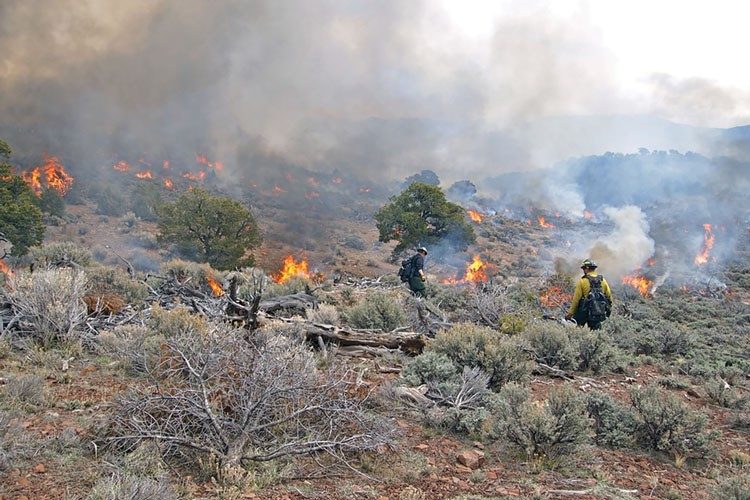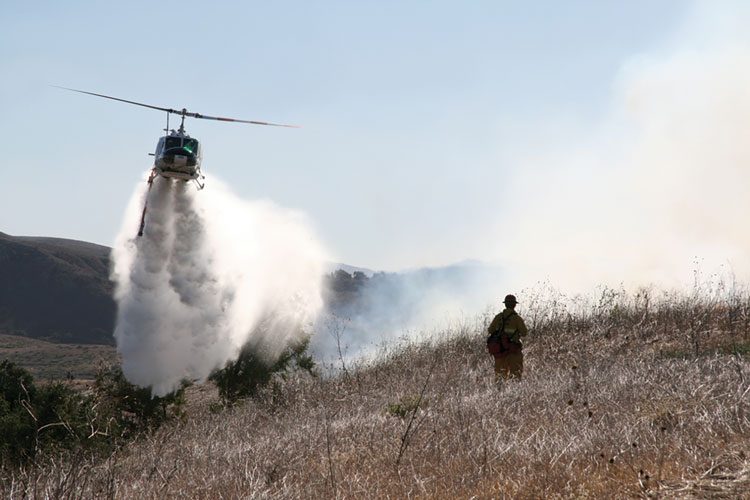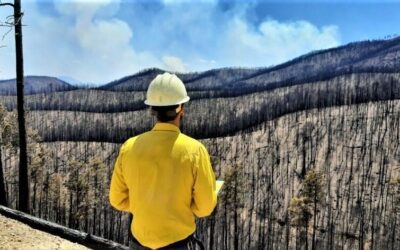A look at a benefit of fire

When properly monitored, prescribed, and contained, these fires can act as a fuel treatment. (Photos by Shutterstock.)
Shannan Mills | FireRescue Magazine, Volume 12 Issue 4
A fire that burns out of control can dangerously threaten populations, put humans and structures at risk, and decimate large amounts of national wildland. But that’s not to say that there are no marked benefits to having regular wildland fires that are well controlled. In fact, when properly monitored, prescribed, and contained, these fires can act as a fuel treatment. Fuel treatments help mitigate the overabundance of fire fuel in the canopy and on the forest floor that can cause future fires in the area to burn dangerously out of control.
The Need for Fuel Treatment
Fire activity remains a real concern throughout the United States, and it has become an ever-growing issue as climate change continues to have a larger effect on the weather patterns year over year and droughts become more severe and more common over time.
Back before large populations and fire safety began to strictly control the initiation and spread of wildfires, smaller, low-impact fires were common across the United States. But new settlements and growing populations have drastically changed the face of wildland fires in America. In the early, wilder years of the nation, small natural fires kept underbrush from piling up and eventually snuffed themselves out naturally. But fire suppression and a decline in tree harvesting have begun to build wildlands that are ripe with fire fuel. Overstocked trees; frequent drought; and a buildup of underbrush, fallen leaves, dead trees, young saplings, and other kindling have left many forests unable to cope with natural fires and manage their spread and there is potential for severe damage.
Wildland Fires as Fuel Treatment
This new understanding of the benefits of fuel treatment has led to an evolving philosophy on how to prepare for and handle fire activity. The new school of thought, based on the intelligence wildland officials have gathered over the years, is that by allowing wildland fires to burn, or even performing controlled burns, a natural fuel treatment is engaged. If wildland fires are allowed to play their part in keeping forest conditions in check, these areas are inherently less susceptible to severe fire damage down the line.
Wildland fires not only eat up fuels on the forest floor, but they also help adjust the overall structure of vegetation in the area. In turn, this helps act as an additional natural fuel suppressant to prevent future fires.
Controlled Burns
Controlled burns are often commissioned to act as fuel treatment. The natural wildland fires that occur over time affect many more acres of land in the United States than these controlled burns, and they have a much similar effect. Along with helping to cut down on fire-hungry underbrush, they promote biological diversity and encourage the propagation of species that only reproduce after a fire event. Aside from removing dead vegetation, wildland fires also help revitalize the soil with nutrients and reduce tree density and thus competition for resources.
According to research by Northern Rockies Fire Science Network, wildland fires were proven to truly act as a fuel treatment by limiting the occurrence, size, and severity of subsequent fires. However, knowing whether a fire will prove itself as a strong fuel treatment depends on the age of the fire, the type of forest and the age of that forest, and the expected weather at the time of a new fire. The ability of these fires to act as a fuel treatment diminishes as the time after the fire increases. Extreme weather conditions also reduce the ability of wildland fires to act as fuel treatment.

It is important to continue to learn exactly how the dynamics of a particular forest environment will encourage or prevent the spread of fire.
Preparing for and Managing Future Wildland Fires
The size, occurrence, and severity of wildfires and the recent fire activity in an area can help firefighters better understand future fire threats and estimate the incidence of upcoming fires. By being able to understand the ecological effects of wildland fires, researchers are better able to manage fires in ways that help create healthier forests and landscapes that are more resilient under the threat of fire.
The effective management of wildland fires is imperative to maintain hardy forests and healthy ecosystems. Monitoring these fuel treatments can be challenging, as the behavior of fires is still difficult to anticipate and not well understood. This lack of data and understanding makes it difficult to identify hazardous areas, manage them with fuel treatment, and measure the effectiveness of their fuel treatment in the reduction of a fire hazard.
It is important to continue to learn exactly how the dynamics of a particular forest environment will encourage or prevent the spread of fire. And there is a great deal of active research being done to attempt to learn exactly what makes a fuel treatment truly effective. As more and better analysis and research are conducted to help improve our knowledge of fire behavior, officials and experts will be better equipped to take that information and build better models and simulations. These simulations will help experts anticipate future fires and normalize hazardous areas through the proper application of fuel treatment.
There is also not yet an exact science to measuring fuel treatment success. Efforts are still being made to develop measurable benchmarks and testing processes to help rate these successes. But by carefully building benchmarks, officials and experts are slowly defining the specific results that indicate success.
Wildland fires can help limit the severity, scope, and occurrence of future fires by acting as a fuel treatment. These fires also play a part in keeping the ecosystems healthy and renewed and providing certain species the opportunity to naturally proliferate. Creating wildland fires, or “controlled burns,” can help preserve larger trees, enrich the soil, make room for new growth, and help protect human structures from the risks associated with unplanned burns in wildlands overstocked with fuel. Ongoing collective efforts are being made to define the benchmarks of success for this fuel treatment, develop and test new approaches for predicting their impact, and build realistic and reliable simulations of fire behavior.
Shannan Mills was hired as an administrative assistant in 2002 and quickly moved into a new role as marketing coordinator. Throughout the years, she learned that the wildland firefighting market and customers were her true passion and in September 2013 was promoted to division manager for National Fire Fighter Wildland Corp. In her role as division manager, Mills focuses on helping the company best serve the wildland firefighters who protect our lands and homes and growing the wildland firefighting market.




